What does the future of Australian golf look like? These six influential voices are helping bring it into focus
You might not realise it watching the PGA Tour’s weekly broadcasts, but golf’s discourse is no longer monopolised by Establishment voices. The democratisation of content along with evolving consumer behaviours – read: no one’s got time for five-hour rounds! – has produced a chorus of new voices shaping the conversation about golf’s future.
They’re posting videos on TikTok and podcasts to Spotify. They’re ditching the polo-and-slacks look for the hoodie-and-sneakers vibe. And they’re refusing to accept golf as an out-of-touch pastime for wealthy white men.
With an eye towards the decades to come, we spoke with six of the most influential and important new voices in our sport. What they share, in addition to a deep love for the game: a steadfast belief that golf, like all things, must adapt to survive – and, ideally, to thrive.
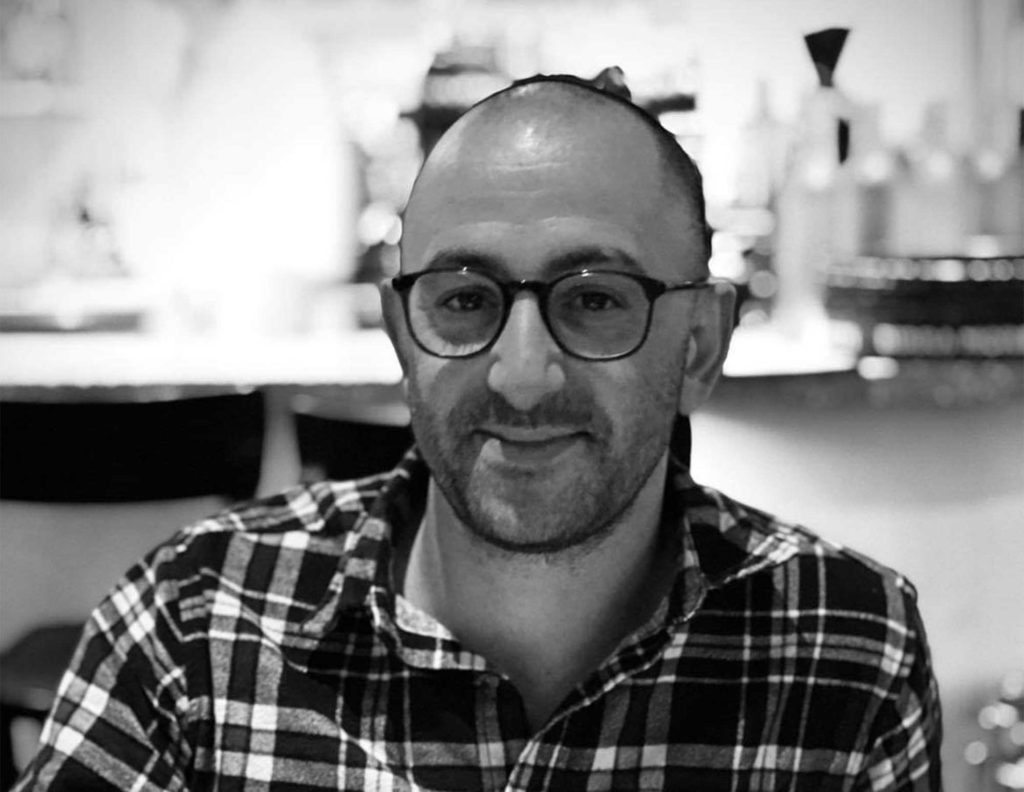
The Visionary: Peter Vlahandreas
When Peter Vlahandreas left the world of private golf club operations to start up his own golf management company, he had one clear objective in mind: grow the game.
His theory? By helping public golf facilities better utilise the land they sit on, they’ll become more profitable and self-sustainable and, in doing so, offer what most private clubs simply can’t – an attractive, fun and affordable entry into the sport.
Cue what he describes as the “pin-up boy” of his company – Shanx mini golf. While putt-putt golf is hardly a new concept, Vlahandreas’ Shanx offering is unique in that it isn’t amusement-based with clown heads, windmills and rocks in the middle of putting surfaces. Instead, Shanx delivers miniaturised versions of real courses, all modelled off traditional golf architecture. From an aesthetics and playability standpoint, it not only tickles the senses of the scratch marker but lights a flame within for the beginner and everyone in between.
“The essence of Shanx was always designed to grow the game and be a genuine pathway for people coming into the sport, kids or adults,” says Vlahandreas. “We wanted to create something that represents golf without being too serious but by the same token not being gimmicky or a flash in the pan. I’ve always been very big on the importance of remaining sympathetic to the traditions and rich history of each facility in the sport of golf. We’re not the ones to throw it out. But we can always tweak and modify it. I think we get that balance right with our Shanx mini-golf offerings. They have a genuine excitement-factor that encourages repetitive visitation, which is where golf courses – public, private and semi-private – generate their revenues.”

Vlahandreas said the COVID-19 pandemic, despite having had a predominantly positive financial impact on clubs across the country, has only fast-tracked the need for public courses to re-evaluate their one-dimensional business models as public and political pressure continues to mount over the use of ever-shrinking community greenspace.
“There’s no better time to fix the roof than when the sun’s shining,” Vlahandreas says. “Yes, people are playing in droves right now but you’ve also got communities asking, ‘Hey, we want to use that space, too.’ Shanx was really born from what I believe in, which is to be innovative and to create bespoke options for local governments to change the face of their facilities for that next generation and make golf facilities relevant for the next 20 years.
“COVID has certainly helped decision-makers – whether they be in private clubs, private equity or government – understand that, Hey, we’ve got an asset, it’s working well right now. But we need to ensure it’s working well in the future.
Vlahandreas’ first successful pitch was to the run-down Regency Park Community Golf Course, owned and operated by the City of Port Adelaide Enfield.
“I pitched a 20-year vision for that facility and, in my view, it tapped into all the key messages that I’d been hearing for the past two decades in golf,” Vlahandreas says.
“They wanted an operator who was innovative. They wanted an operator who put a modern approach to the facility – even things like online timesheets, a new website, enhanced social-media engagement and other modern applications for business – which may sound strange to some but there’s a huge segment of golf in Australia which still operates like it’s 1980.”
Even more critical in Vlahandreas’ presentation to Port Adelaide Enfield was showcasing what a nine-hole course in the middle of Adelaide could be. The full site masterplan incorporates a Shanx mini-golf facility and new-look driving range that can be transformed into a usable space for food trucks, cinema screenings, community fairs and even dog walking during low-utilisation periods. The end result is a one-stop shop for community recreation – and a far more compelling argument that public golf courses should be repaired, not spared.
The fanfare surrounding Australia’s only turnkey mini-golf course company has only increased on the back of a second major Shanx project down at Links Shell Cove in the Shellharbour region of New South Wales. After launching earlier this year, early reports show the club has turned over more than 3,500 rounds on the Shanx mini-golf course, with some 50 percent of customers having never set foot on the property before. Incredibly, the return-on-investment targets have come in from three-and-a-half years to 18 months, and that’s in just the first four weeks of operation.
“I could stand here, black and blue, and convince anyone that my brand works but at the end of the day, there are real-life examples out there that prove it works,” Vlahandreas says.
“I’ve been getting weekly phone calls now about Shanx and business-optimisation strategies. For example, some clients are saying the pandemic has boosted their cash reserves by $400,000 and they want to know what to do with it. Smart general managers, boards and local governments are acknowledging they can’t just burn it. They’re now asking how they can make that little war chest sustainable and the lifeblood of the club. They’re looking at things like Shanx mini golf. They’re looking at things like new state-of-the-art driving ranges. They’re looking at ways they can open up other access areas for the public, which all bodes well for golf’s future.
“Unfortunately, there will still be clubs out there that just don’t take advantage of a brand. They’ll slip back into their old ways, be complacent and operate on a false economy. But it’s not too late to change. It’s not too late to fix that roof.”
The biggest winners out of Shanx and other like-minded facilities, of course, are the people. Long socks, petty rules and expensive waiting lists are out, and not a moment too soon.
“Golf made itself too serious along the way, no question,” Vlahandreas says. “Any sport, particularly from a child’s point of view, is driven by that three-letter word: fun. That’s what we’re about. Grab a putter, grab a ball, don’t worry about rules and don’t worry about dress codes. Just go out and have fun.”
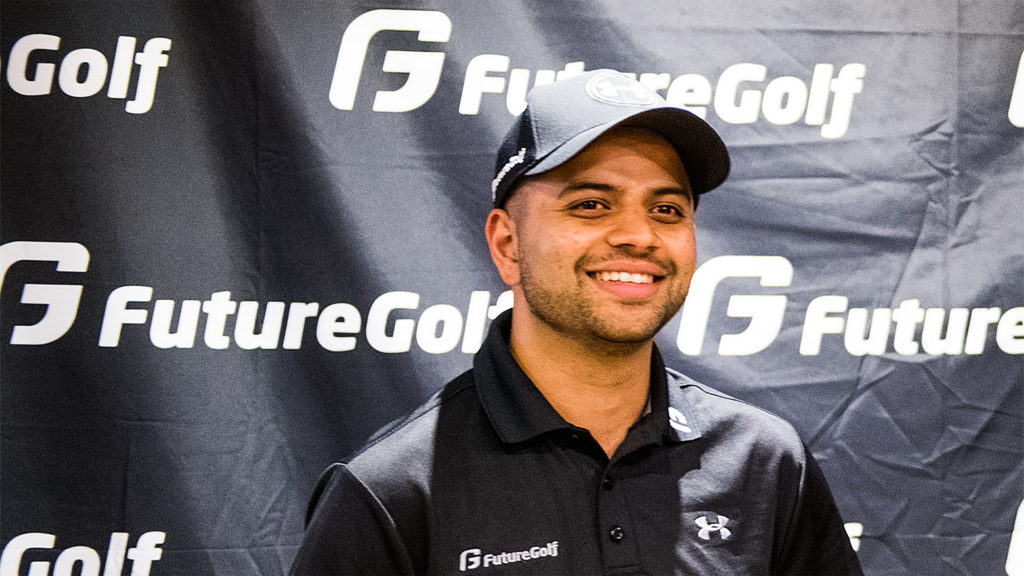
The CEO: Ali Terai
They said he was crazy. They said it was a stupid idea. They said it would never work, not in a million years. ‘They’, of course, were traditionalists in the truest sense of the word.
They were wrong.
When young entrepreneur Ali Terai launched Future Golf in 2014, he couldn’t have pictured it going as well as it has. Then again, maybe he did.
Launched as a two-sided partnership and membership platform to provide Australian golfers with an alternative pathway into golf, Future Golf immediately drew the ire of clubs across the country: “Great, another social club pinching traditional club members away from their rightful homes.”
It was anything but.
By offering members tee-times at partner courses, along with a registered handicap and other extras like club fittings and simulator experiences, a new generation of golfers was suddenly being exposed to the many joys of the sport. Seven years on and Future Golf has grown exponentially to become Australia’s leading pathway, platform and community for the non-traditional golfer – emphasis on pathway as the club proudly boasts 31 percent of its membership (more than 3,000 golfers) have moved on to become full paying members at traditional golf clubs. A further 59 percent say they are likely to follow suit within the next three years.
“Our No.1 mission from the very beginning was simple: can we get younger golfers into the sport?” Terai says.
“We knew there was a gap in the market for someone to provide golfers with more access, more flexibility and an alterative type of value in a golf membership.”
The obvious challenge with that was always going to be convincing the traditional clubs that Future Golf wasn’t going to be a threat to the existing model. But Future Golf didn’t win a 2019 Telstra Business Award for nothing. They had a vision, and respected and understood golf’s traditions.
“The key was communicating how Future Golf was going to supplement clubs and facilities and actually help them grow,” he says. “It’s what we work really hard on still to this day because we’re ultimately a partnership. If our partners don’t like what we’re doing, Future Golf doesn’t exist. So much of that is around how do we keep communicating that it’s important for a golf club to get younger members coming in? How do we keep showcasing these amazing stories where one of their members starts off as an absolute beginner and then is playing off 3 and is starring in their pennant team?”
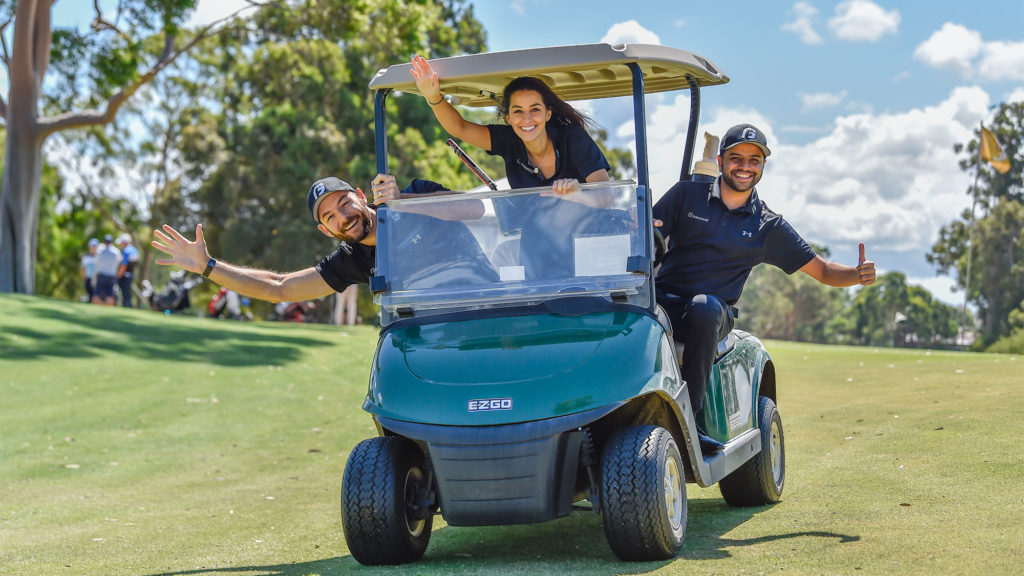
Having worked in the university space for 10 years prior to launching Future Golf, Terai saw immediate parallels between the two industries. “The university curriculum was no different to golf – it was a traditional space, too,” he says. “The bachelor’s degree had been the same for 400 years. It hadn’t really changed too much. That was my way of thinking, even back then, How do we expand on the traditional thinking within our sport so it can thrive moving forward?
They were lessons well learnt. By developing what he calls “the membership for the modern golfer”, Terai and the team at Future Golf have ticked off countless checkpoints that all bode well for the sport’s future. Among them, 79 percent of members have played a course for the first time, the average age of membership is 34.6 and 92 percent now feel more comfortable about playing golf since they joined Future Golf, a dramatic turnaround from the 44 percent who initially said they have felt intimidated or embarrassed at a golf course.
“I look back to when we started all this and so many clubs were nearly trading insolvent and were in financial distress,” Terai says. “I looked at the tradition and rich history of all these clubs, where all these amazing people had, for generations, built their club into something really amazing. And then to see it declining, I was like, Well, the way that you keep your legacy going forward and everything that your club stands for is by bringing younger people in and get them engaged with the club, get them loving it, and hopefully bringing their friends in with them. That has to be the future, the next logical step for club boards and committees.”
In the meantime, Terai and his team will continue to work on bringing new golfers into the sport and collaborate with the industry.
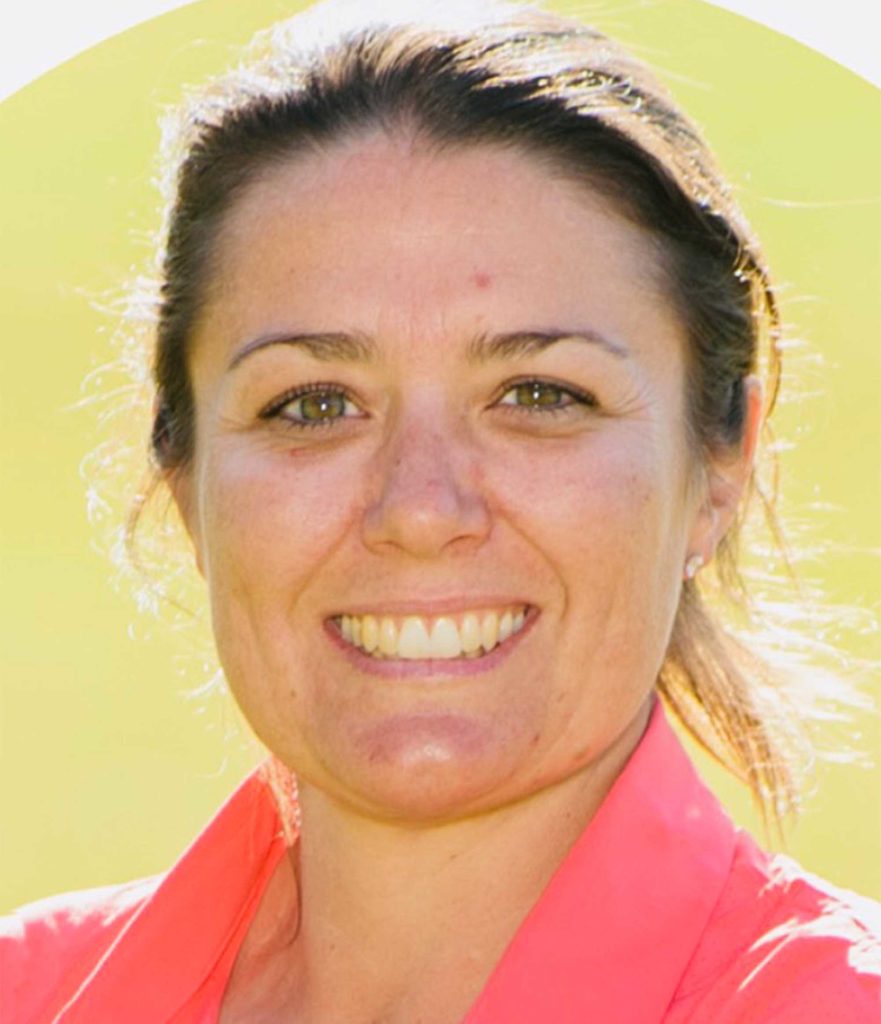
The mentor: Lisa Jean
Could it be that golf’s biggest handicap to getting more people taking up the sport is that dreaded marker we’re told we need to be playing to every round?
If the past 18 months have taught Melbourne instructor Lisa Jean anything, it’s that golf’s authoritarian nature and insistence on competition play is turning a swathe of new participants away.
Jean, of course, is no stranger to competition play at the highest level. Six years on the Ladies European Tour and being the first woman to win the Victorian Club Professional Championship speaks volumes for her ability and understanding of golf’s ultimate end game. But it’s what she’s witnessing while coaching at Albert Park Driving Range that has her on a mission to change the status quo.
“The No.1 thing I hear from my students, many of which are women, is once they go to a golf club, that’s when the challenges start for them,” Jean says. “They’ve learnt how to hit the ball and get the general gist of the game, and they know how fun it is, but once they get to the golf course they’re told, ‘OK, now you’re here you have to do things this way and that way,’ and it just becomes too overwhelming.”
Jean says the worst turnoff of all for newcomers, particularly women, is they join a club with friends, thinking they can play socially and have a relaxed day out, only to be forced to get a handicap and play competition rounds.
“They finish their rounds with 14 [Stableford] points because they don’t yet have the competitive ability or desire and they inevitably come back to me – almost to the point of tears – as an absolute wreck,” Jean says. “But if they could actually play golf without worrying about counting their score, without worrying about taking eight shots in a bunker and being able to pick up their ball when they want, they’d be addicted to the game and gradually improve to the point where they’re ready to take that next step.
“It’s time for golf clubs to relax a bit. Stop feeling like you need to tell people what they can and can’t do. Relax the dress standards, within reason. If a lady is playing in active wear, does it really matter? Are the colour of socks really worth worrying about in 2021? Golf needs to change with society. There are no class systems anymore, or at least there shouldn’t be. Society is becoming much more accepting to being different. Golf needs to stop being sticklers for yesterday’s rules.
“If newcomers don’t want to get a handicap and play competitions, they shouldn’t be forced to. If they’re out on the fairways, having fun using the facilities and paying for the pleasure, what does it matter?”
It’s why Jean spends much of her time away from the coaching circles actually playing social rounds with her students, much to the surprise of her fellow club members.
“They think because I’m a pro that I wouldn’t enjoy playing with beginners… that perhaps I would prefer to play with elite players. That couldn’t be more wrong and, to be honest, it’s another big problem we need to overcome,” she says. “That intimidation factor that, ‘I’m not good enough’ and, ‘nobody will want to play with me’ is another turnoff. Well, guess what? We all started in the same boat. We all took up the game for the first time. How can we expect anyone to get better if we aren’t there to lend a hand?”
Jean firmly believes golf clubs have become too membership-focused and not understanding enough of ‘golfers’. As she says, if you push someone too hard too early to become a member of your club, you risk pushing them away forever.
“Let them come and play your facility without the pressure of joining and playing competitions,” Jean says. “People will join when they want to. If this pandemic has shown us anything it’s that people will come to your golf course. We’re seeing record numbers of participation. They know you’re there, and when the time’s right they will join.
“I gave a lesson to two 14-year-old mates the other day and I asked them what’s got them interested in playing golf. They replied, ‘Our dads play, our friends play, and we don’t want to play football anymore because it keeps getting shut down anyway.’ They also said something I didn’t expect to hear: ‘Golf could be good for when we get jobs because a lot of business deals get done on the golf course.’ And they’re right.”
But it’s not all ‘F’ marks for our clubs. Case in point: Jean took some students out for a hit at Melbourne’s Peninsula Kingswood Golf Club recently. They were having the time of their lives – laughing, hitting good shots, hitting not-so-good shots, and just generally enjoying the 18-hole walk when something unexpected happened. Jean takes over: “We noticed the group of men in front of us were looking back at us a lot. When we caught up to them on the next tee, I reached out to excuse our loud behaviour as I was quite conscious of it. They immediately replied, ‘No worries at all. It’s so nice to see people out here enjoying themselves and having fun playing this great game.’”
Jean took a sigh of relief. She could finally see light at the end of the tunnel.
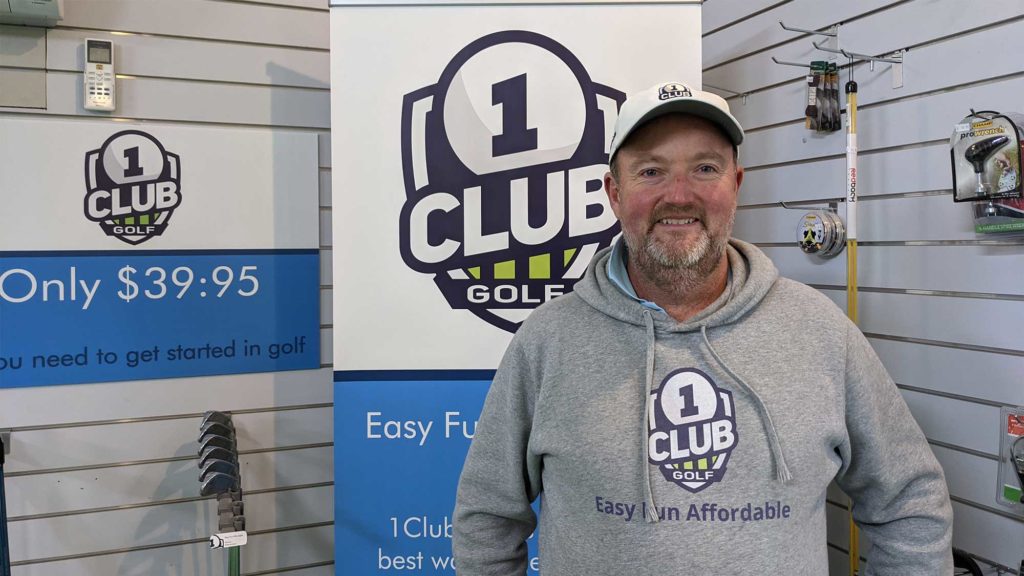
The advocate: Sandy Jamieson
Renowned Victorian golf coach Sandy Jamieson saw the warning signs long before COVID-19 reared its ugly head. The former tour pro-turned tour coach-turned renegade of all things exclusive in golf predicted a grim future for a sport he says was stuck in its ways. “Golf was dying,” he admits. “I went back and looked at public golf and it deserved to be shut down long before COVID. We were losing courses to redevelopments. The course I joined was down from 42,000 rounds a year to just 17,000. To have a large patch of greenspace only being used by a small minority of the community, everyone was right to look at public golf and say, “Well, does it deserve to be here?”
Such an alarming trend was why he started the social-media movement #publicgolf. Jamieson started going out and interviewing everyday people who were playing cheap and affordable golf at their local public course and published their stories on social media.
“The perception of public golf is just wrong,” Jamieson says. “The #publicgolf stuff was built around the need to explain to the wider community just how important a role golf plays in people’s lives because people who don’t play the sport don’t understand that public golf is different to what they consider to be golf, which is wealthy, male and white.
“Public golf courses are for learning. They’re where we start our journey in this game. They’re where people who haven’t got the financial means to be a member at a private club can access golf. And, most importantly, they’re an outlet for people to exercise and look after their physical and mental health, particularly during stressful times like a pandemic.”
As Jamieson posted more and more inspirational short stories about people enjoying public golf, the industry caught on, and the #publicgolf movement exploded. It’s something he hopes can continue well beyond the pandemic.
“It’s critical we articulate to the owners of public golf courses, which are councils, what’s really to be gained out of the public golf course, which is not around finances,” Jamieson says. “At the moment, their tenders are all around finances. It needs to be around what benefit we’re going to bring the community through being active. What benefit we’re going to bring to the community through being inclusive. I would love people to keep putting their own #publicgolf stories out there because it’s not mine, I don’t own it. The more people who get on board, the better.”
Jamieson is also pushing ahead with his passion project called 1Club Golf, an introductory program that welcomes newcomers to the game by teaching them the basic fundamentals of hitting a ball with just one club. Getting people hooked on the feeling of getting a ball from point A to point B, without any pressures or the confusion of having to own 14 clubs, changes the unabating narrative that golf is too difficult, Jamieson says.
“We’ve built these bloody barriers around golf,” he laments. “The media, the politicians, the public, we all say, ‘Golf is hard.’ And we wonder why people aren’t flocking to the game…
“This whole idea of people saying they haven’t got time or the money to play golf – what a load of s–t! How long does it take to go watch a game of football with the family? And more importantly, how much does it cost them to do that? People go to shopping centres and spend all day spending money and eating in restaurants.”
With 1Club golf, Jamieson says you will be on the course within 15 minutes and a good golfer within an hour. There’s no need for an entire bag of clubs and certainly no need for a fat wallet.
“The pillars of what 1Club is all about are built around how I learnt to play golf and how most of the past generations learnt to play,” Jamieson says. “It’s not complicated. We started with one club and progressed from there. We weren’t forced to spend up big from the outset. We weren’t forced to book multiple lessons before we could finally experience the golf course. We discovered the joy of hitting a little white ball and went from there.”
If Jamieson gets his way, what’s old will most definitely become new again.
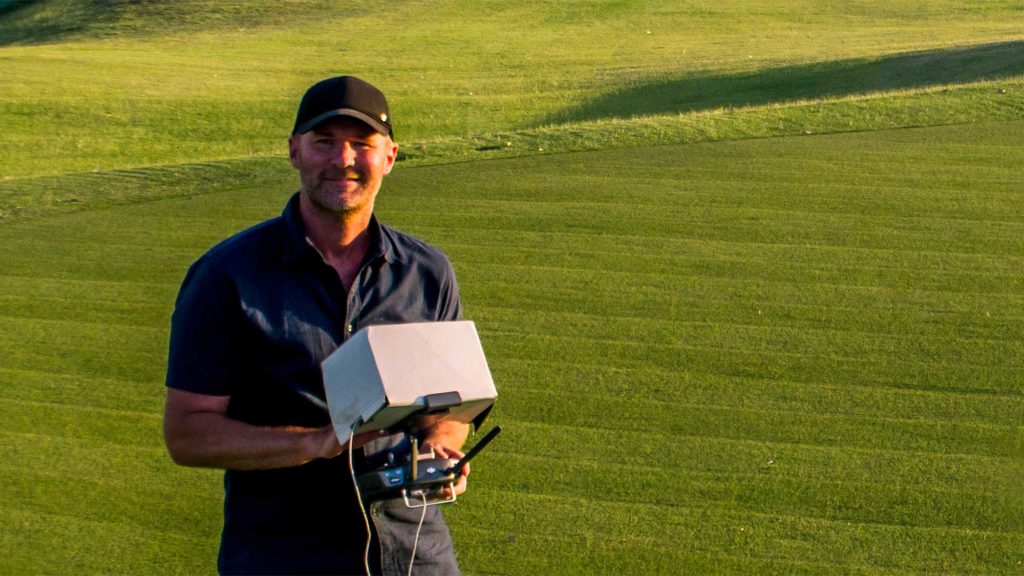
The Creative: Nick Wall
There’s an old adage in the media game: “Content is king.” And in an industry that finds itself catering to a whole new demographic of TikTokers, Instagrammers and live streamers – not to mention quarantiners! – content creation has never been more in vogue.
When it comes to pure golf-course content, however, not many can hold a candle – or a photography drone – to multimedia maestro Nick Wall. The Byron Bay lensman, who started out as a videographer and network TV cameraman, found himself in a whole new ball game when, by chance, he stumbled upon golf. Truth be told, golf actually found him.
“My first job was actually down at Barnbougle in Tasmania when it officially opened,” Wall recalls. “A random Chinese golf show commissioned me to go down and shoot some footage for them and the rest, as they say, is history.”
Today, shooting golf-course footage consumes up to 75 percent of Wall’s time at his aptly named company AirSwing Media. But what separates his work from a lot of like-minded shooters is the high-quality drone footage he shoots and edits for clients, and it’s proving to be a real game-changer for golf clubs in both Australia and around the globe.
“It would have been late 2014 – I was getting a coffee and talking to a photographer when he said to me, ‘Have you heard of these drones?’ I was like, ‘Military drones?’ He’s like, ‘No, no, no. Photography drones.’ I went home, Googled it, and then literally ordered a drone from the United States that night. When it arrived, I put it together and went straight to Byron Bay Golf Club and threw it up in the air and went, Holy s–t! This is the future of golf-course photography and video.”
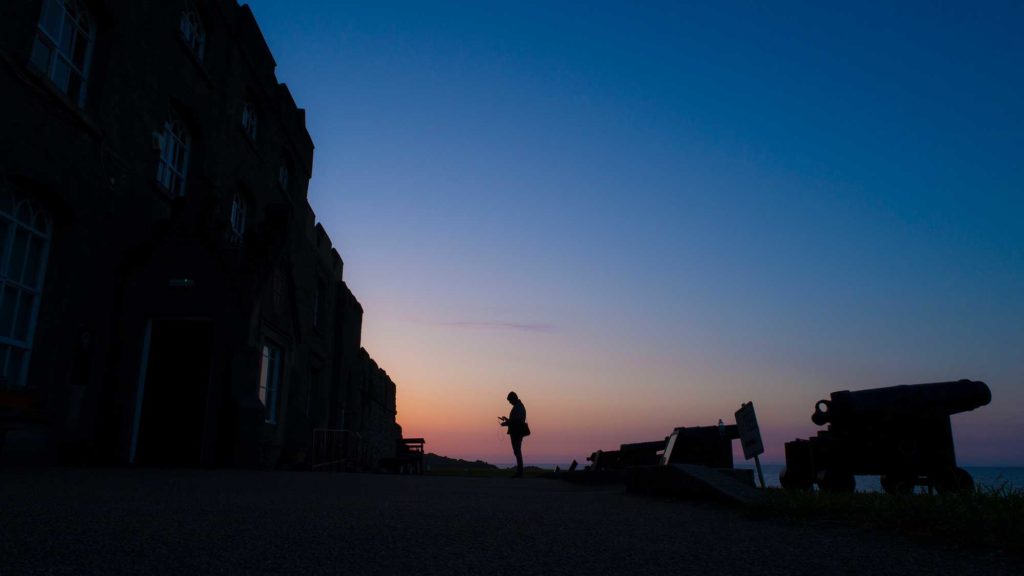
Wall had gone from attaching an extendable ladder to the back of his car for taking risky aerial shots over a period of hours to capturing genuine birds-eye-view footage of an entire course in a fraction of the time, and all minus the occupation health and safety issues.
“I couldn’t believe you could find a spot on the golf course and shoot the entire property with a control pad,” Wall says.
“For me, drones opened up a whole new world of opportunity for imagery. You used to have to always get a chopper to do anything from high above, which was such huge expense. All of a sudden, bang, drones arrived. Now you can see parts of the golf course we’ve never been able to see before, and I guess it just transcends, right? People just love it.”
Not just everyday people, either. Famous course architects are liking what they see, too.
“I often see Tom Doak commenting on footage because he sees his designs from a completely different perspective. He’ll say, ‘Wow! I’ve never seen that hole shot in that direction. That’s awesome.’ And he’s right, it is awesome.”
While COVID has put a freeze on his international filming commitments, Wall keeps himself busy with domestic jobs and looking at ways he can raise the bar even higher in his caper. He understands just how critical his role is as a purveyor of aerial, ground video and photography for exposing more people to the beauty of golf.
“Being able to give people different perspectives of a golf course, I think draws more people to them to play, no question,” he says. “The second part of that is then to be able to edit footage into videos that entice people to a course – I think that’s a huge, huge part of the future of our game. Who isn’t captivated by a well-produced golf-course flyover video? Golf courses can see dollar signs in some of the comments people leave on these videos. They’ll tag their friends and start planning that next golf trip. The organic growth of these posts across all social media platforms, compared to yesteryear, is phenomenal, and such a powerful marketing tool for clubs.
“If you’re constantly in people’s social media feeds, you’re subliminally pulling them in to have a game. You really are.”

The youtuber: Alex Etches
When a 20-something PGA pro from the UK decided to record his swing and post it on YouTube, little did he know it would inadvertently steer him way from his passion for teaching and custom fitting.
When this “standard chap” then packed his bags and relocated from Nottingham to Perth with his family, he definitely didn’t think he would go on to become Australia’s answer to golf YouTube sensation Rick Shiels.
Yet that’s where this crazy little thing called life has taken Alex Etches, ‘Al’ to his 60,000 subscribers. While the Pommy accent remains loud and proud, make no mistake, this loveable larrikin’s heart bleeds green and gold after the opportunities his new homeland has presented him.
“I never said at any point, ‘I want to be a content creator’ – it just all kind of happened by chance, really,” admits Etches, who can still recall shooting his first video review, hostage style, with a mobile phone. “After initially visiting Western Australia to see what it was like, I came back to the UK feeling like Alex was still in Australia and I just couldn’t shake that feeling off. When I returned to Perth permanently, I instantly felt ‘myself’ again, and got straight onto trying to find a place to work and live out here.”
That door quickly opened in the form of Australia’s leading online golf retailer, GolfBox. Big Al immediately got to work on his newfound gig, creating content in the form of equipment reviews that he hoped were engaging and categorically different to what had ever been shot before.
“I wouldn’t say I purposely thought, This market needs a shake-up. It was more about my natural tendency to be a bit of an idiot in front of the camera,” Etches jokes. “A lot of people were doing quite serious reviews and it wasn’t everyone’s cup of tea, but a lot of people started commenting on my videos, saying it was refreshing. I started to enjoy it more myself and suddenly it became more, You know what? Maybe golf does need this. Maybe golf does need to get rid of that stereotype of: you’ve got to be serious, you’ve got to have lots of money and you’ve got to be a certain demographic. Everyone can play golf and my philosophy was all about joining that up and showing people that you can have fun and golf can most certainly be entertaining, particularly to the non-golfer.”
And that’s exactly what Etches has been doing ever since, letting his personality shine through on screen and, in doing so, watching the products he reviews fly off the shelves.
Wigs, animal costumes (“My local fancy dress store loves me!” he jokes), robots, hickory clubs – you name it, Etches has done it, reviewing gear with self-deprecation and gusto, all in the name of content.
“It’s all about having a story, a product story – an engineering process, for example – and then turning that into something fun and a bit more entertaining,” Etches says. “Every time I get a new product, I look at it like it is a completely blank canvas… Like, What can I do? What stupid stuff can I do with this? Suffice to say, when it comes to the product innovation and storylines, the crazier the better for me.”
And, as intended, his wacky content isn’t just resonating with hardcore golf fans. “You get the odd comment like, ‘I’m not even a golfer and I’d come back and watch you.” That, to me, is worth a thousand comments because it reinforces exactly what I’m trying to achieve.”
So, does Etches think his newfound craft is something that will catch on Down Under?
“I think it’d be nice to see more golf YouTubers in Australia,” he admits. “It’d be nice for more to just give it a try, because even though you could say it’s competitive, you do help each other out because it grows the overall audience for golf. And obviously the more people that are doing it, it’s more exposure you get on YouTube and that means you’re more likely to come up on other recommended lists.
“As long as I can put the best videos out that I’m capable of making, and obviously still enjoying the process of creating them, then hopefully I’ll still be here in 10 years’ time.”




